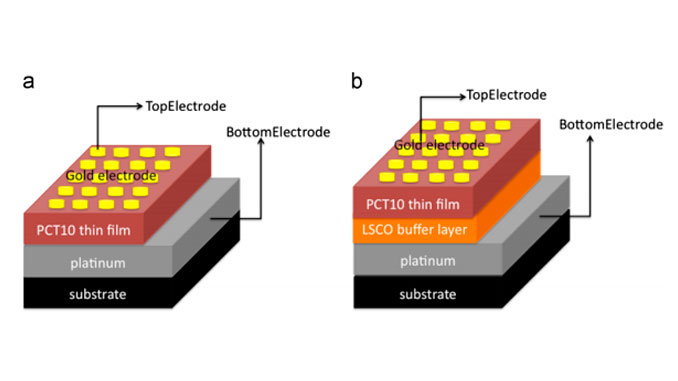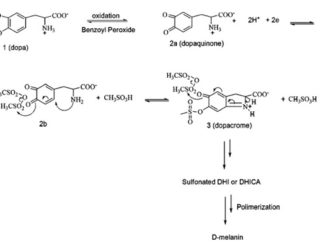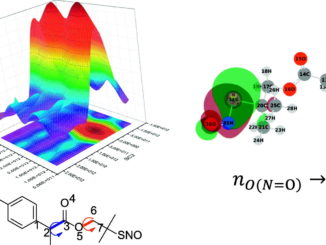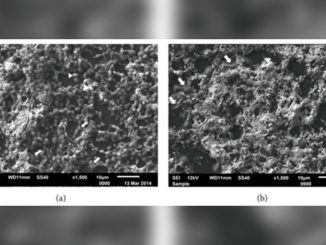
Writers: D.S.L. Pontes, F.M. Pontes, Marcelo A. Pereira-da-Silva, M. Zampieri, A.J. Chiquito, P.S. Pizani, E. Longo
Keywords: Thin films; Buffer layers; Pb1−xCaxTiO3; Chemical synthesis
Abstract: Structural, microstructural and ferroelectric properties of Pb0.90Ca0.10TiO3 (PCT10) thin films deposited using La0.50Sr0.50CoO3 (LSCO) thin films which serve only as a buffer layer were compared with properties of the thin films grown using a platinum-coated silicon substrate. LSCO and PCT10 thin films were grown using the chemical solution deposition method and heat-treated in an oxygen atmosphere at 700 °C and 650 °C in a tube oven, respectively. X-ray diffraction (XRD) and Raman spectroscopy results showed that PCT10 thin films deposited directly on a platinum-coated silicon substrate exhibit a strong tetragonal character while thin films with the LSCO buffer layer displayed a smaller tetragonal character. Surface morphology observations by atomic force microscopy (AFM) revealed that PCT10 thin films with a LSCO buffer layer had a smoother surface and smaller grain size compared with thin films grown on a platinum-coated silicon substrate. Additionally, the capacitance versus voltage curves and hysteresis loop measurement indicated that the degree of polarization decreased for PCT10 thin films on a LSCO buffer layer compared with PCT10 thin films deposited directly on a platinum-coated silicon substrate. This phenomenon can be described as the smaller shift off-center of Ti atoms along the c-direction 〈001〉 inside the TiO6 octahedron unit due to the reduction of lattice parameters. Remnant polarization (Pr) values are about 30 μC/cm2 and 12 μC/cm2 for PCT10/Pt and PCT10/LSCO thin films, respectively. Results showed that the LSCO buffer layer strongly influenced the structural, microstructural and ferroelectric properties of PCT10 thin films.
DOI: 10.1016/j.ceramint.2013.08.063




